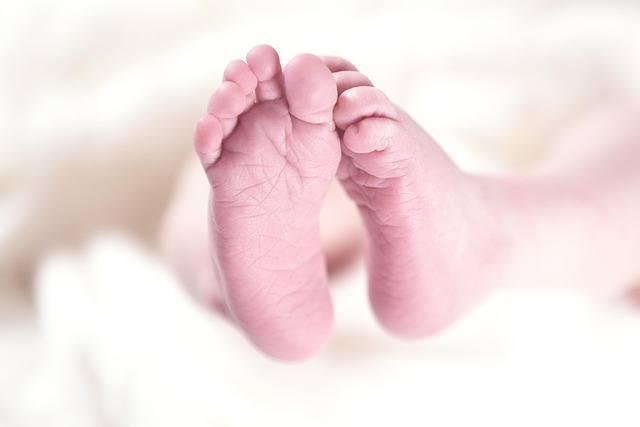Understanding skin tags' causes and types is vital for effective Glasgow Tag Removal. Home remedies like duct tape and apple cider vinegar offer safe, over-the-counter options. Cryotherapy and surgical excision are medical procedures for persistent or uncomfortable tags, ensuring permanent removal with proper post-care to prevent recurrence.
Looking for effective Glasgow tag removal solutions? Skin tags, those small, soft growths on the skin, are common but often unsightly. Understanding their causes and types is the first step. This guide explores both non-surgical at-home methods and medical procedures preferred by professionals in Glasgow. Learn tips for preventing recurrence and ensuring proper care after removal. Discover the best approach to rid yourself of skin tags once and for all.
- Understanding Skin Tags: Causes and Types in Glasgow
- Non-Surgical Methods for Safe Tag Removal at Home
- Medical Procedures: Professional Tag Elimination Options
- Preventing Recurrence: Care and Post-Removal Tips
Understanding Skin Tags: Causes and Types in Glasgow

Skin tags, also known as acrochordons, are small, soft skin growths that typically appear in areas where skin rubs against itself, such as the neck, armpits, and groin. In Glasgow, as in many parts of the world, understanding the causes and types of these benign lesions is key to effective Glasgow Tag Removal methods.
The most common cause of skin tags is friction or irritation, often due to clothing or jewellery rubbing against the skin. Certain conditions like diabetes or obesity can also increase their likelihood. Skin tags come in various types, including single tags and cluster tags. Single tags are isolated growths, while cluster tags appear as multiple tags grouped together. Knowing these details can help individuals choose the most suitable removal method, whether it’s through freezing (cryotherapy), cutting (excision), or non-invasive treatments, ensuring effective Glasgow Tag Removal with minimal discomfort.
Non-Surgical Methods for Safe Tag Removal at Home

For those seeking safe and effective non-surgical methods for Glasgow tag removal, there are several home remedies worth exploring. One popular option is using duct tape. This simple, over-the-counter solution involves applying a strip of duct tape directly over the skin tag and leaving it on for several days or until the tag falls off. It’s important to note that this process requires patience as it can take up to two weeks to see results.
Another home remedy gaining traction is apple cider vinegar. Diluting the vinegar with water, soaking a cotton ball in the solution, and then securely wrapping it around the skin tag before repeating the process daily for several days has shown promising outcomes. Like duct tape, consistency is key when using these non-surgical methods, but they offer a cost-effective and accessible alternative to professional treatments for those looking to safely remove unwanted skin tags from home.
Medical Procedures: Professional Tag Elimination Options

In some cases, individuals may opt for medical procedures to remove skin tags, especially if they are persistent or causing discomfort. There are several professional tag elimination options available, such as cryotherapy and surgical excision. Cryotherapy involves freezing the skin tag with liquid nitrogen, a quick and relatively painless process. This method is commonly used for small skin tags and is suitable for people who prefer a non-invasive approach.
Surgical excision, on the other hand, is a more extensive procedure where a doctor cuts out the skin tag and seals the wound. It may leave a scar but offers a permanent solution. Both methods are typically performed in a clinic or medical setting by qualified healthcare professionals, ensuring safety and effectiveness for Glasgow Tag Removal.
Preventing Recurrence: Care and Post-Removal Tips

After successful removal, proper care is essential to prevent skin tags from returning. It’s crucial to keep the treated area clean and dry, gently washing with mild soap and water, and avoiding harsh scrubs or picks that could irritate the skin. Moisturizing the area lightly can help heal any minor redness or irritation but be sure to use a fragrance-free moisturizer to avoid potential allergic reactions.
Additionally, it’s important to protect the skin from sun exposure as sunlight can stimulate tag regrowth. Wear protective clothing or apply broad-spectrum sunscreen when outdoors. Lastly, resist the urge to pick or scratch the area even if itches; this could lead to infection or trigger new tags to form. For Glasgow Tag Removal, follow these post-removal tips diligently to minimize recurrence and maintain healthy skin.
In conclusion, removing skin tags in Glasgow is both safe and effective with a range of options available. Whether you prefer non-surgical methods for home treatment or opt for professional medical procedures, understanding the causes, types, and prevention strategies is key to successful Glasgow tag removal. By following the care and post-removal tips outlined, you can minimize recurrence and maintain healthy skin.
